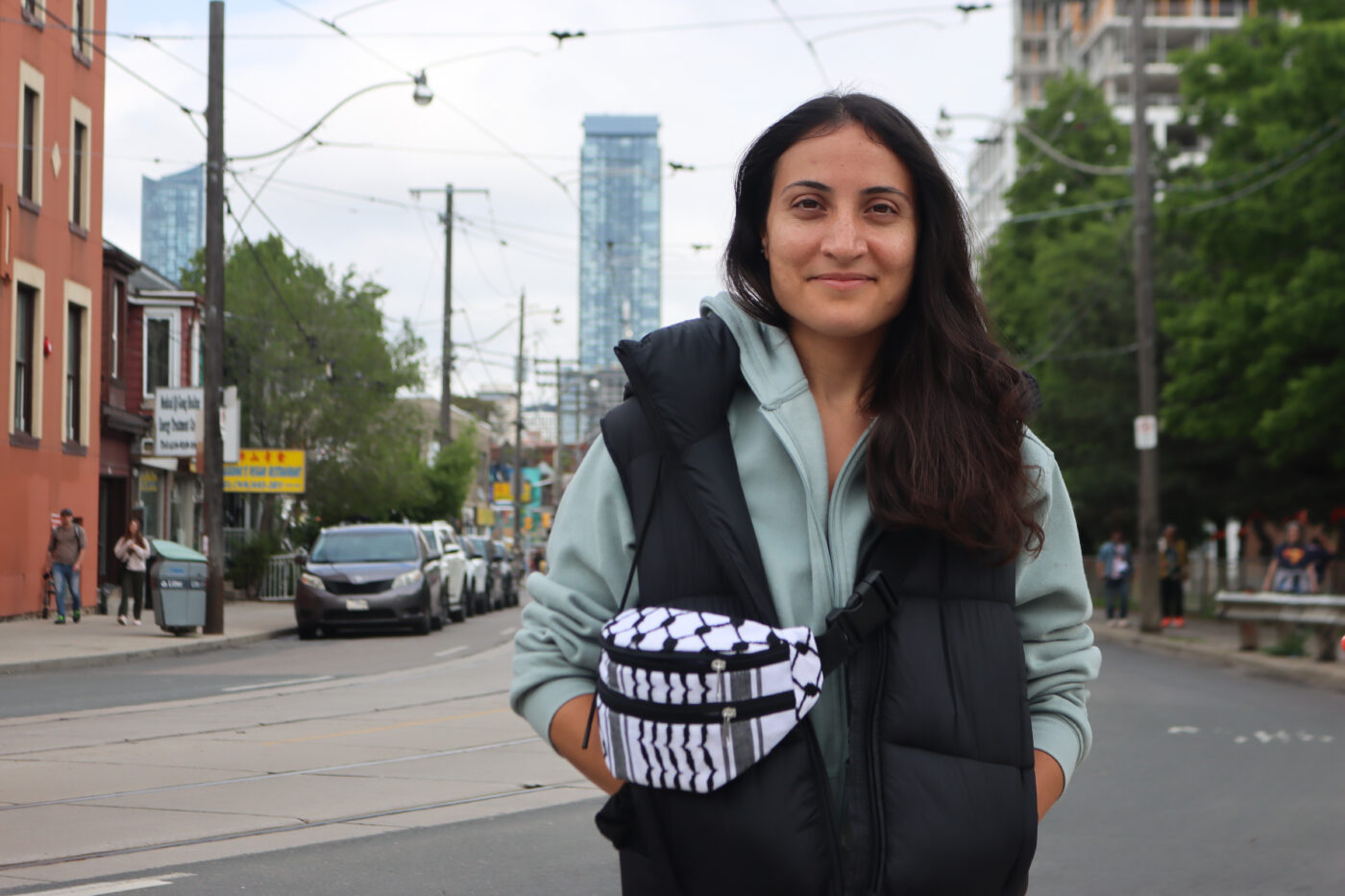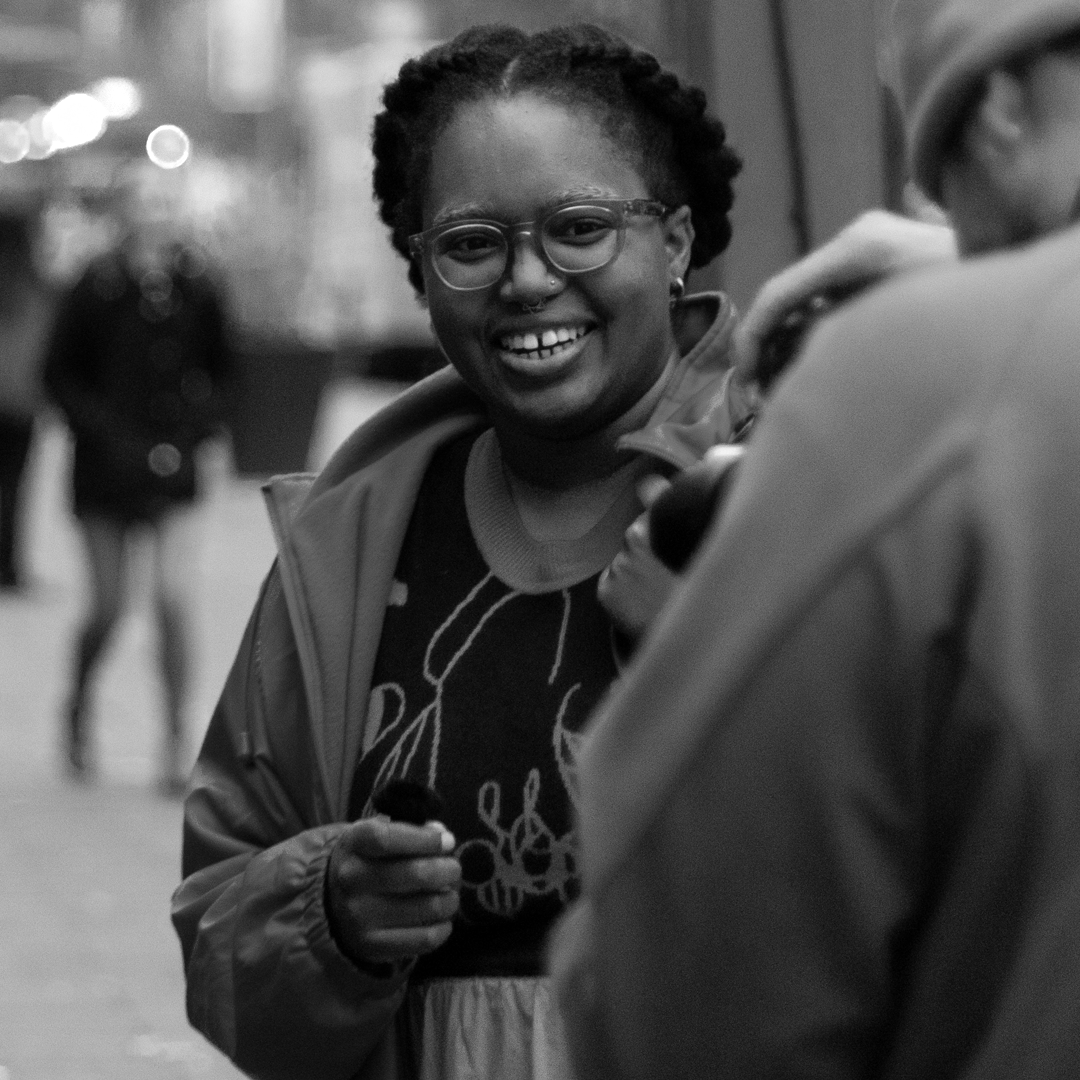THE GREEN LINE'S
CHANGEMAKER INTERVIEW
How to involve local communities in planning and development: Lessons from Tamara Sabarini
For our May 2024 Changemaker newsletter, we spoke with Tamara Sabarini, the director of Development and Community Engagement at Scadding Court Community Centre, about the importance of lived experience and participatory planning.

Tamara Sabarini at The Green Line’s community newsroom and engagement outpost launch event at Market 707 on May 25, 2024.
📸: Sara Mizannojehdehi.

Adele Lukusa
Graduate of Toronto Metropolitan University and Kitchener native living in Riverdale. Enamoured with all things arts and culture. Journalist and avid zinester who loves criticism, but loves iced tea more.
May 1, 2024
For Tamara Sabarini, lived experience and community engagement lives at the forefront of her work.
Seven years ago, Tamara was first introduced to Market 707 and Scadding Court Community Centre (SCCC) during her time working at the Toronto Metropolitan University’s program that helped Torontonians privately sponsor Syrian refugees. One of the families helped by this program was able to set up a stall at Market 707, and that’s when Tamara fell for the concept. A year later, she was ecstatic to find herself working at SCCC.
For the uninitiated, Market 707 is an outdoor market set in upcycled shipping containers, owned and operated by the community that makes up SCCC. The containers host various local vendors and pop-ups.
|
|||||
|
|||||
|
|||||
|
This interview was edited and condensed for clarity.
Fact-Check Yourself
Sources and
further reading
Don't take our word for it —
check our sources for yourself.
The Green Line
Scadding Court Community Centre
Care about our city, but don't know how to make it better? Sign up for simple, step-by-step guides to solving problems in your neighbourhood — one small action at a time.
